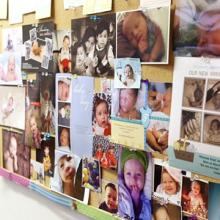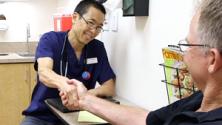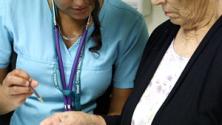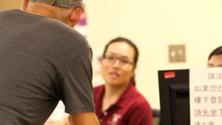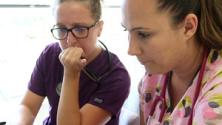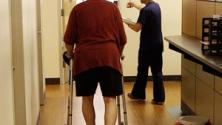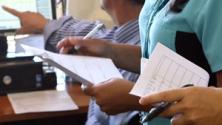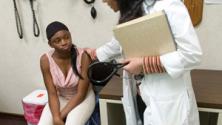What is the challenge?
For many health care workers, a long-term relationship with their patients and with their community draws them to primary care. They recognize that one can’t really know a person without some understanding of their community and culture, and treatment is often incomplete without community-based services. In addition, many primary care practices would like to do more to make their communities healthier places to live. But the daily grind of patient care is all consuming for many practices, which can make it tough to stay focused on the communities they serve. In addition, having a community focus is not a salient part of the training most health care workers receive.
What needs to change?
Practices need to hire staff from and build connections with the important communities where their patients live and work. They also need to be aware of the other services and resources available in those communities. Learning about communities and connecting with organizations that provide services in those communities must be a leadership priority for real action to occur.
What do we gain by making these changes?
Practices that have staff who represent their patients’ communities and cultures are better able to interpret their patients’ needs and tailor treatment accordingly. When practices know about and build relationships with community service agencies, referrals are more efficient and effective and patients are more likely to get the services they need. And when practices help make their communities healthier and more supportive of people with health, social, or financial challenges, it benefits their patients, enhances the practice’s self-esteem and reputation, and can aid in retention of valuable staff.
- Hire staff representative of the communities served.
Hiring staff from the communities a practice serves provides an insider’s view of cultural norms, environmental issues, resources, and other important aspects of community life. Their presence tends to relax patients, and they can give important information to the care team about individual patients and their environments. They can also boost a practice’s competency in relevant languages and work with patients to help them understand and adhere to medical recommendations. Practices need to develop and implement recruitment, hiring, and training approaches that help them recruit and retain staff from their patients’ neighborhoods and culture.
- Designate staff to coordinate community linkages.
Gathering information about community resources and building relationships with them benefits from having a person or persons in the practice to guide and coordinate these activities. It is a natural function for social workers, but this community resource specialist role can be done well by committed, community savvy individuals with less formal training.
- Make an effort to learn about community strengths and weaknesses.
It’s important to devote some staff time to understanding patients’ needs and to scan the environment to learn about resources available in the community. Start by:
- Obtaining input from patients and their personal caregivers through patient advisory groups, focus groups, surveys, etc.
- Making a list of the types of community services your patients need.
- Identifying community organizations that provide those services.
- Evaluating their accessibility and performance.
Next, try to identify the factors that contribute positively to the community’s health, as well as those that have a negative influence.
- Develop relationships and agreements with key community organizations.
As with medical specialists, relationships with key community service agencies and programs give the practice a much clearer idea of the services offered, the agency’s requirements and expectations, and the mechanics of referral. Such relationships also give community agencies important insights as to how they can better meet the needs of patients and families.
- Use the practice’s influence and resources to better the community.
For several LEAP practices, being committed to their communities is as important as being committed to their patients. That commitment manifests in various ways depending on the community’s needs and the practice’s interests and resources. But in general, it involves efforts to make the community a healthier place to live and raise children. Often, practices will help develop community resources that their patients need but that aren’t currently available.
Webinar and power point presentations
Case summariesVignettes, profiles and testimonial videos
Role featuresJob descriptions, career ladders and other HR materials
Staff trainingTutorials, training manuals, etc.
Patient materialsAction plans, brochures, team cards, welcome letters
WorkflowTemplates, flow sheets and mapping aids
Publications
If you have a question about the improvements, action steps, or tools & resources in this module please let us know. We're here to help. And if we can't answer your question, we can probably connect you with someone who can.
